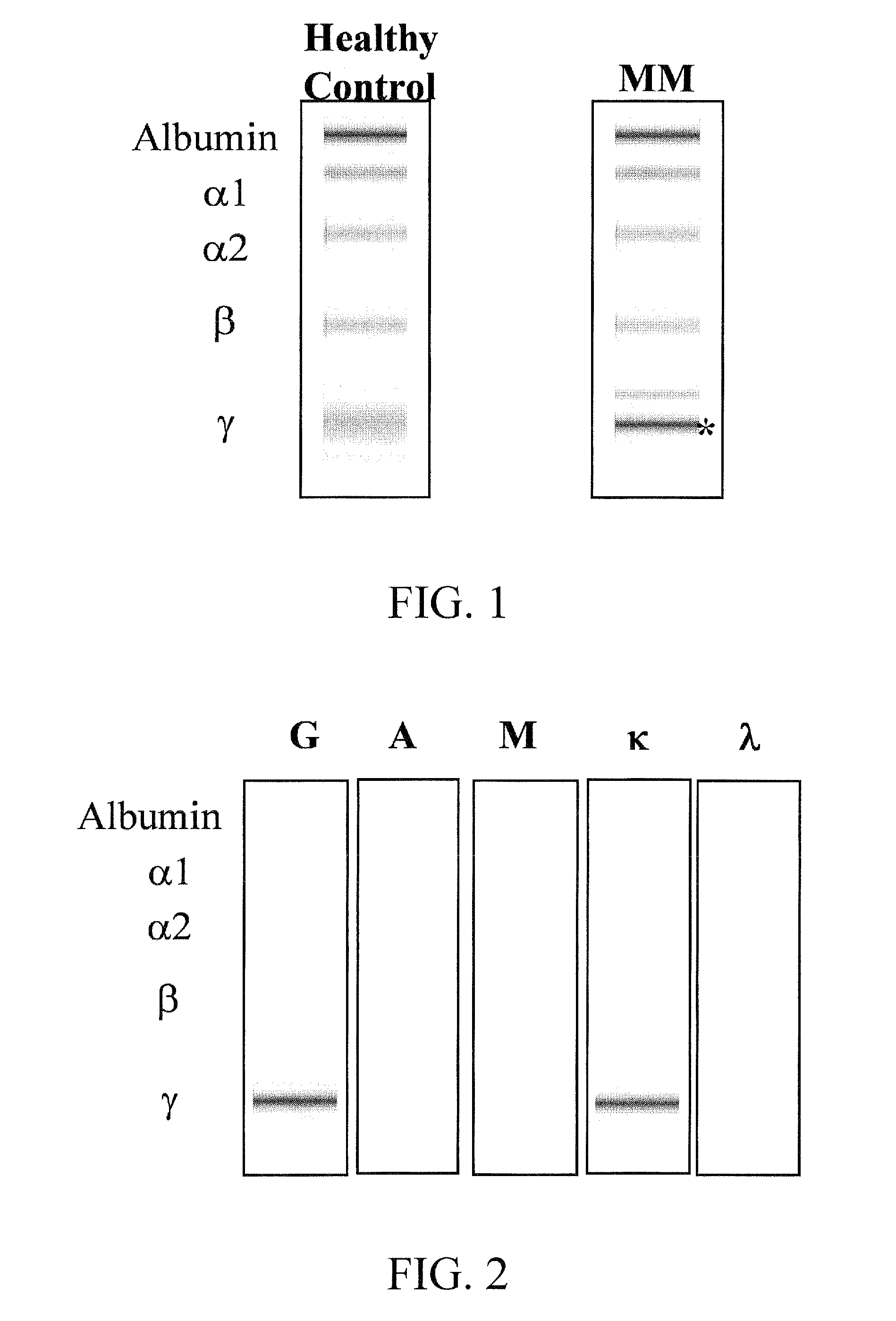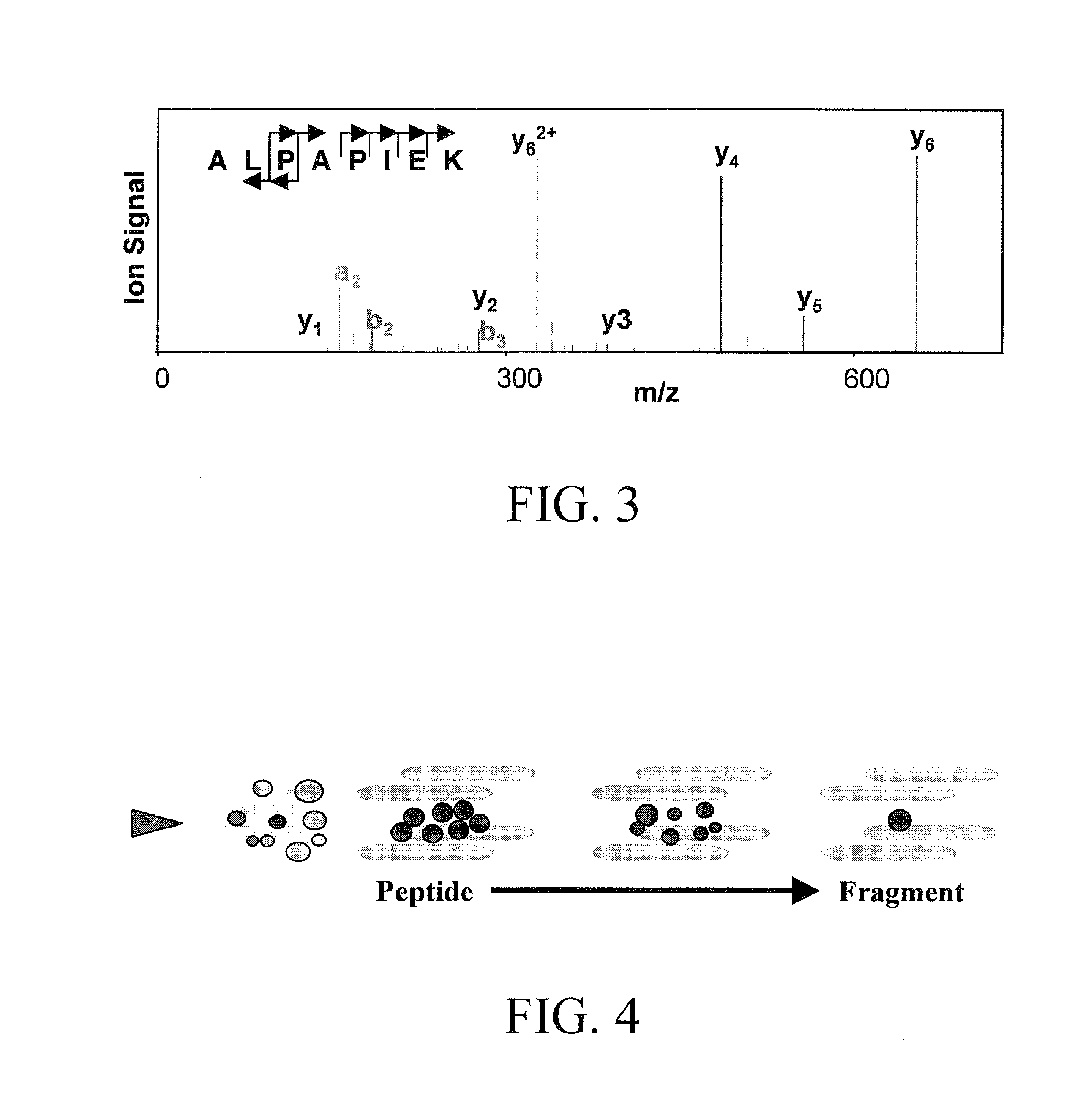Methods and materials for monitoring myeloma using quantitative mass spectrometry
a technology of mass spectrometry and methods, applied in the direction of instruments, peptide/protein ingredients, drug compositions, etc., can solve the problems of high number of clinic visits, large volume of blood collection, and many challenges for mm treatmen
- Summary
- Abstract
- Description
- Claims
- Application Information
AI Technical Summary
Benefits of technology
Problems solved by technology
Method used
Image
Examples
example 1
[0051]In multiple myeloma, because each plasma cell secretes a unique antibody, the replication of the tumor cell and the progression of disease can be monitored by measuring the serum concentration of the monoclonal antibody it produces. Initial qualitative measurements are made using serum protein electrophoresis (SPEP) and dye visualization (see FIGS. 1A and 1B). Separation of the serum proteins is achieved, isolating albumin from four regions of globulins, termed alpha 1 (α1), alpha 2 (α2), beta (β), and gamma (γ), described by the differences in their migration relative to albumin. Normally, antibodies migrate into the γ region, but are low in intensity compared to albumin and are present only as diffuse bands (FIG. 1A). The monoclonal antibodies produced in high concentration by multiple myeloma plasma cells can be visualized as a single narrow, discrete, dark band usually in the γ region of the gel (FIG. 1B). Patients with abnormally high levels of protein in the gamma region...
PUM
| Property | Measurement | Unit |
|---|---|---|
| Force | aaaaa | aaaaa |
| Volume | aaaaa | aaaaa |
| Volume | aaaaa | aaaaa |
Abstract
Description
Claims
Application Information
 Login to View More
Login to View More - R&D
- Intellectual Property
- Life Sciences
- Materials
- Tech Scout
- Unparalleled Data Quality
- Higher Quality Content
- 60% Fewer Hallucinations
Browse by: Latest US Patents, China's latest patents, Technical Efficacy Thesaurus, Application Domain, Technology Topic, Popular Technical Reports.
© 2025 PatSnap. All rights reserved.Legal|Privacy policy|Modern Slavery Act Transparency Statement|Sitemap|About US| Contact US: help@patsnap.com



